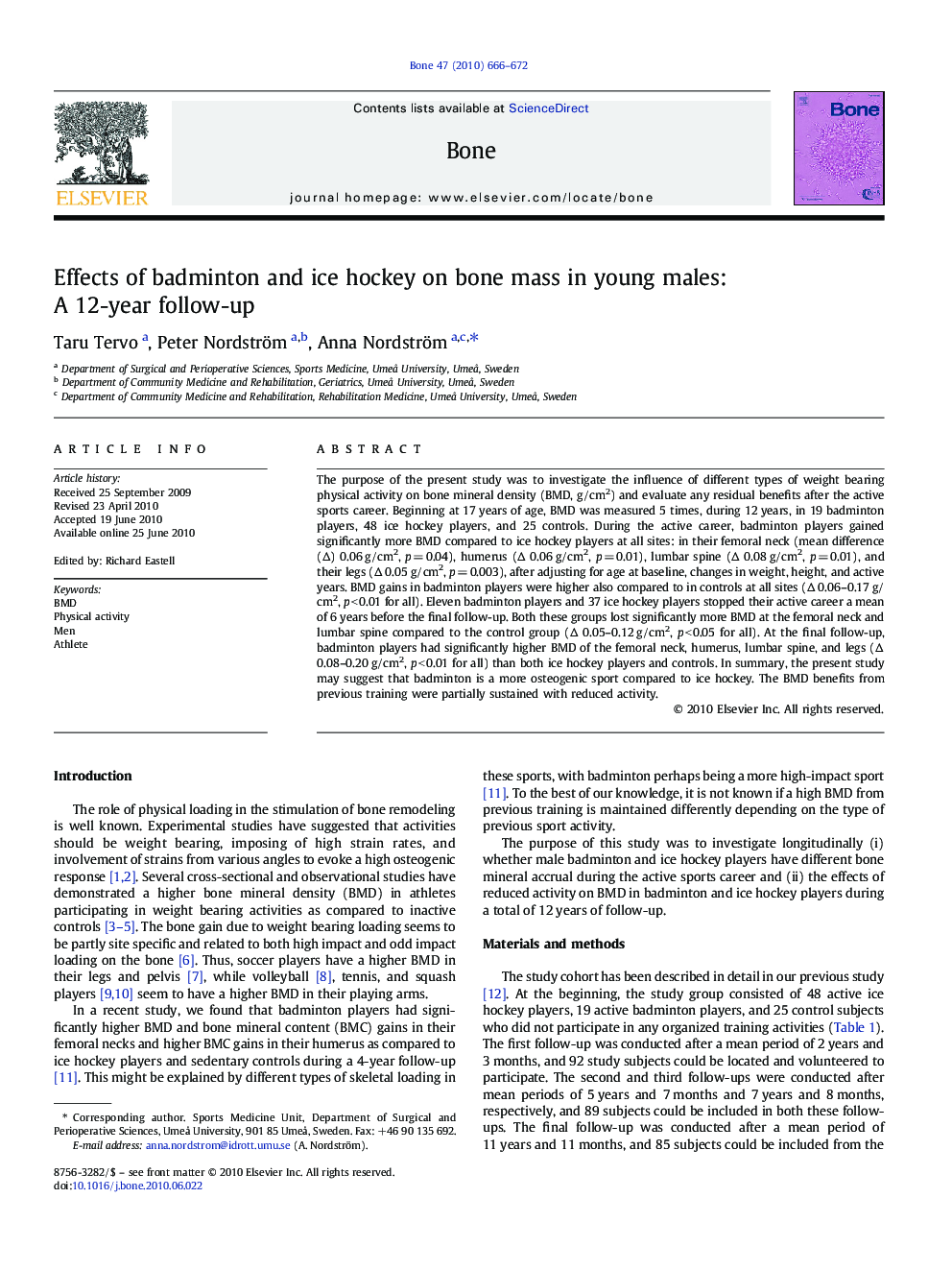| Article ID | Journal | Published Year | Pages | File Type |
|---|---|---|---|---|
| 2780630 | Bone | 2010 | 7 Pages |
The purpose of the present study was to investigate the influence of different types of weight bearing physical activity on bone mineral density (BMD, g/cm2) and evaluate any residual benefits after the active sports career. Beginning at 17 years of age, BMD was measured 5 times, during 12 years, in 19 badminton players, 48 ice hockey players, and 25 controls. During the active career, badminton players gained significantly more BMD compared to ice hockey players at all sites: in their femoral neck (mean difference (Δ) 0.06 g/cm2, p = 0.04), humerus (Δ 0.06 g/cm2, p = 0.01), lumbar spine (Δ 0.08 g/cm2, p = 0.01), and their legs (Δ 0.05 g/cm2, p = 0.003), after adjusting for age at baseline, changes in weight, height, and active years. BMD gains in badminton players were higher also compared to in controls at all sites (Δ 0.06–0.17 g/cm2, p < 0.01 for all). Eleven badminton players and 37 ice hockey players stopped their active career a mean of 6 years before the final follow-up. Both these groups lost significantly more BMD at the femoral neck and lumbar spine compared to the control group (Δ 0.05–0.12 g/cm2, p < 0.05 for all). At the final follow-up, badminton players had significantly higher BMD of the femoral neck, humerus, lumbar spine, and legs (Δ 0.08–0.20 g/cm2, p < 0.01 for all) than both ice hockey players and controls. In summary, the present study may suggest that badminton is a more osteogenic sport compared to ice hockey. The BMD benefits from previous training were partially sustained with reduced activity.
